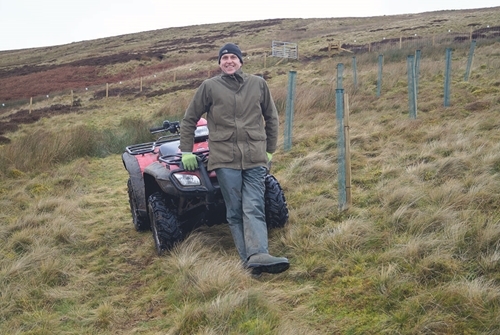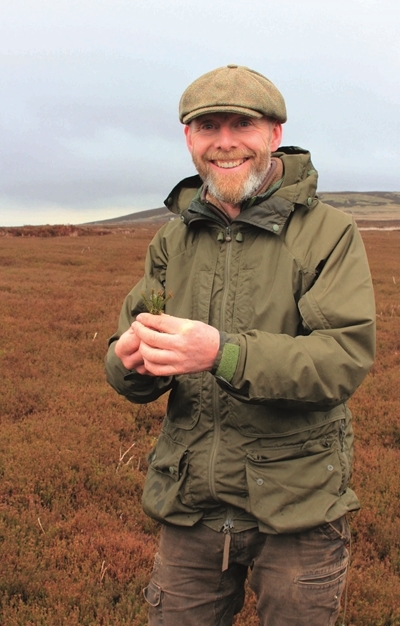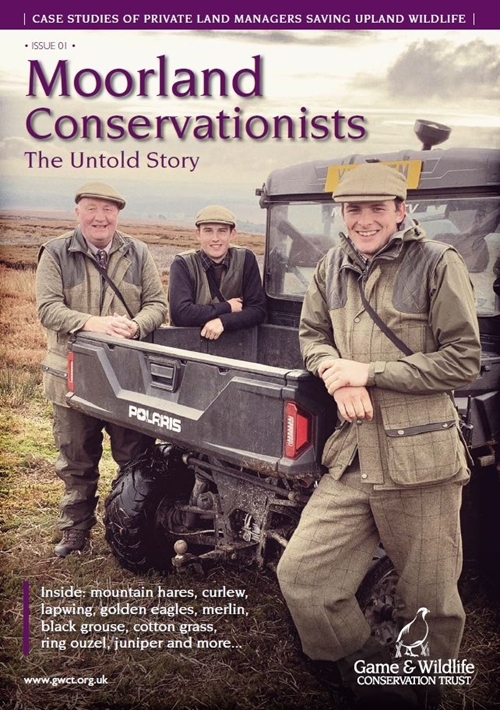
While many of Britain’s nature reserves were closed through lockdown, conservation work continued on private land across Britain. Despite that, the men and women working hard to make our much-loved moorland thrive are often overlooked. Their previously untold stories are celebrated in a new publication from leading conservation charity, the Game & Wildlife Conservation Trust (GWCT).
These nine case studies showcase what can be achieved with passion, hard work and expertise. As many threatened species decline across the UK, these are tales of thriving populations of curlew, black grouse and birds of prey. Despite bucking the trend, these success stories are often overlooked.
In his foreword to the Moorland Conservationists collection, former environment minister Richard Benyon said: “The management of Britain’s uplands is remarkable … it is a story of generations of skill and knowledge, combined with modern technologies and science. The actions of moorland managers are the last bulwark in what is a crisis of species decline across Britain.”
 Among these moorland managers is Roy Burrows, who has spent the past three years transforming the Summerstone Estate in Nidderdale, North Yorkshire. Locals say its unrecognisable, with new ponds, hay meadows, over a kilometre of stone walls repaired and a staggering 65,000 trees planted. The real winners, however, are the local wildlife. Working with local birdwatchers, Roy has installed 50 bird boxes, plus homes for bats, kestrels and barn owls - of which they have three pairs nesting. None of this would be possible without Roy’s efforts, the support of estate owners Steve and Karen Halsall or the encouragement of the local community, whose pubs, hotels and butchers all benefit from increased interest in the area.
Among these moorland managers is Roy Burrows, who has spent the past three years transforming the Summerstone Estate in Nidderdale, North Yorkshire. Locals say its unrecognisable, with new ponds, hay meadows, over a kilometre of stone walls repaired and a staggering 65,000 trees planted. The real winners, however, are the local wildlife. Working with local birdwatchers, Roy has installed 50 bird boxes, plus homes for bats, kestrels and barn owls - of which they have three pairs nesting. None of this would be possible without Roy’s efforts, the support of estate owners Steve and Karen Halsall or the encouragement of the local community, whose pubs, hotels and butchers all benefit from increased interest in the area.
Every conservationist in this collection tells their own success story. Neville Gill has made his corner of Northumberland a haven for black grouse, Tom Orde-Powlett is helping waders to thrive in Wensleydale, Geoff Eyre is restoring Derbyshire’s precious heather moors, James Mawle is improving both land and river on his North Yorkshire family farm and the work done by George Winn-Darley has attracted 16 birds of prey species to the North York Moors.
In Scotland, private land management is helping some of our most threatened wildlife. The efforts of gamekeeper Alex Jenkins have made Edinglassie home to 38 breeding pairs of curlew, while Andrew Farquharson and his gamekeeper Alex Shand are working to recover numbers of golden eagles and capercaillie. It isn’t just birdlife that is bucking the trend. In Perthshire, reduced grazing has seen native plants reappear for the first time in decades, along with the insects they support, all thanks to Sir John Kemp-Welch and his former headkeeper, Ronnie Kippen.
This series of case studies was written by Joe Dimbleby, who is keen to break the stereotypical view of our uplands. “The stories of these conservationists show that, with the right approach, it is possible to combine thriving local communities with a productive countryside and the preservation of our precious heather moorland and its biodiversity” he said.
To read about these conservation success stories, a limited number of copies are available online here for £3.99.

Moorland conservationists featured in the document:
Alex Jenkins – Mountain hares thriving in Upper Donside
Tom Orde-Powlett - determined not to see Wensleydale’s waders disappear
Geoff Eyre - helping restore the Peak District
Andrew Farquharson – delivering conservation on Deeside
James Mawle - reversing the fortunes of the river on his Yorkshire Dales farm
Neville Gill – helping rare black grouse in their Northumberland stronghold
Sir John Kemp-Welch and Ronnie Kippen - working wonders for waders in Perthshire
George Winn-Darley - making wildlife accessible on the North York Moors
Roy Burrows - leading a big-scale restoration project in Nidderdale
Notes to editors
A PDF of Moorland Conservationists is available on request.
The Game & Wildlife Conservation Trust – providing research-led conservation for a thriving countryside. The GWCT is an independent wildlife conservation charity which has carried out scientific research into Britain’s game and wildlife since the 1930s. We advise farmers and landowners on improving wildlife habitats. We employ 22 post-doctoral scientists and 50 other research staff with expertise in areas such as birds, insects, mammals, farming, fish and statistics. We undertake our own research as well as projects funded by contract and grant-aid from Government and private bodies. The Trust is also responsible for a number of Government Biodiversity Action Plan species and is lead partner for grey partridge and joint lead partner for brown hare and black grouse.
ISDN radio broadcast line - at our Fordingbridge HQ we have an ISDN radio broadcast line, allowing us to conduct interviews remotely.
For information, contact: James Swyer - Telephone: 01425 651000